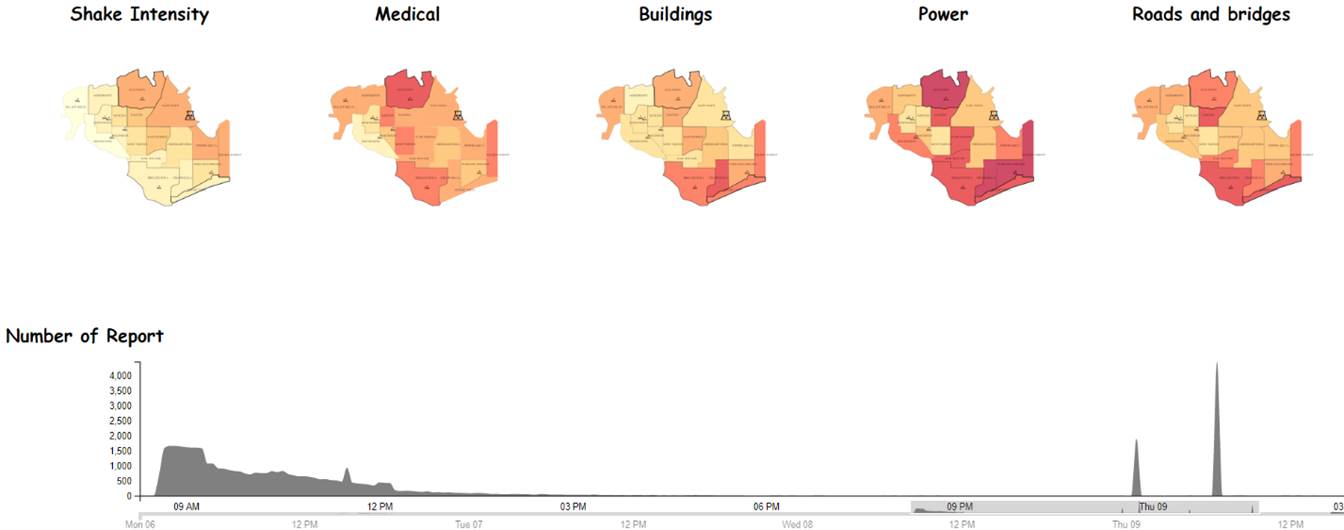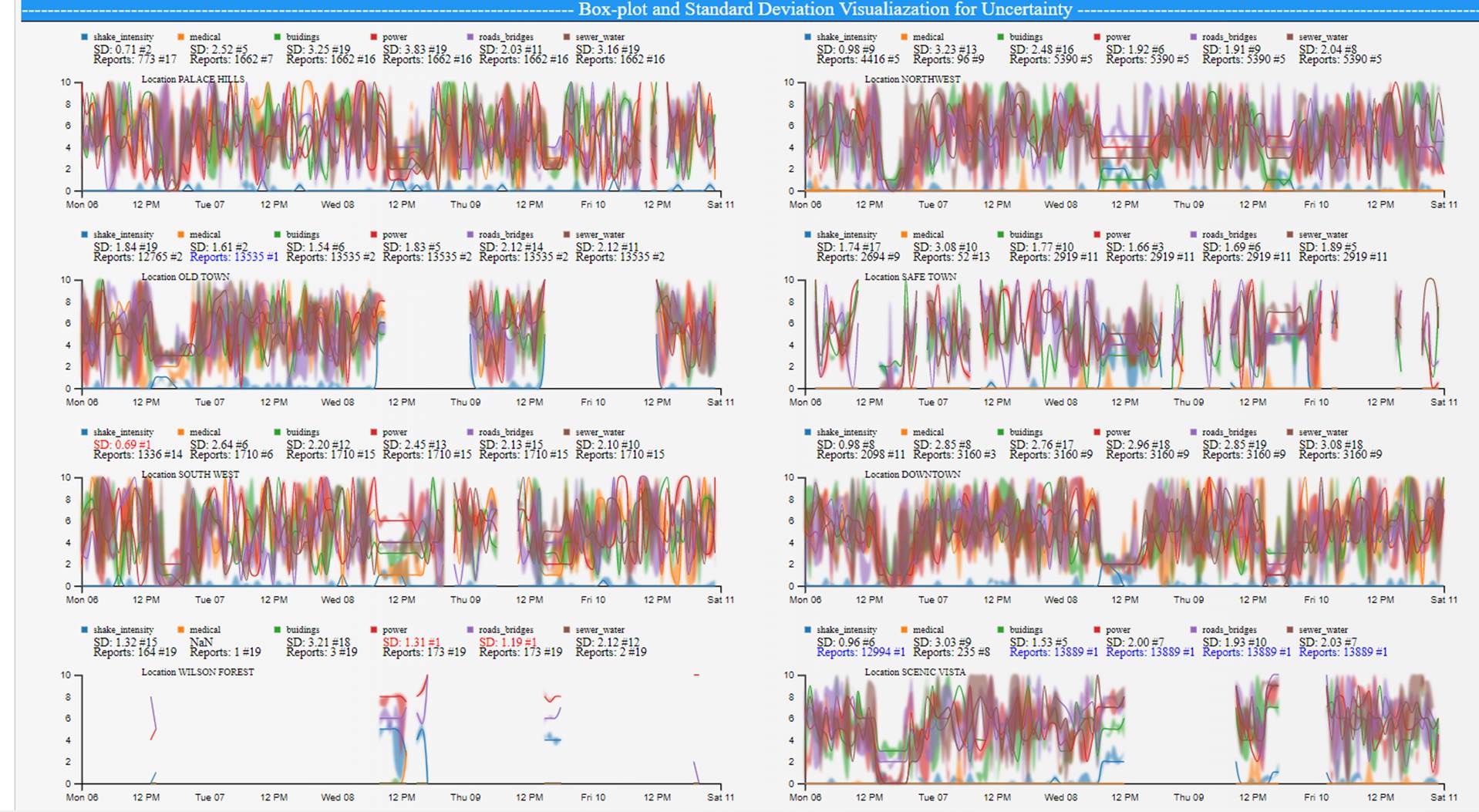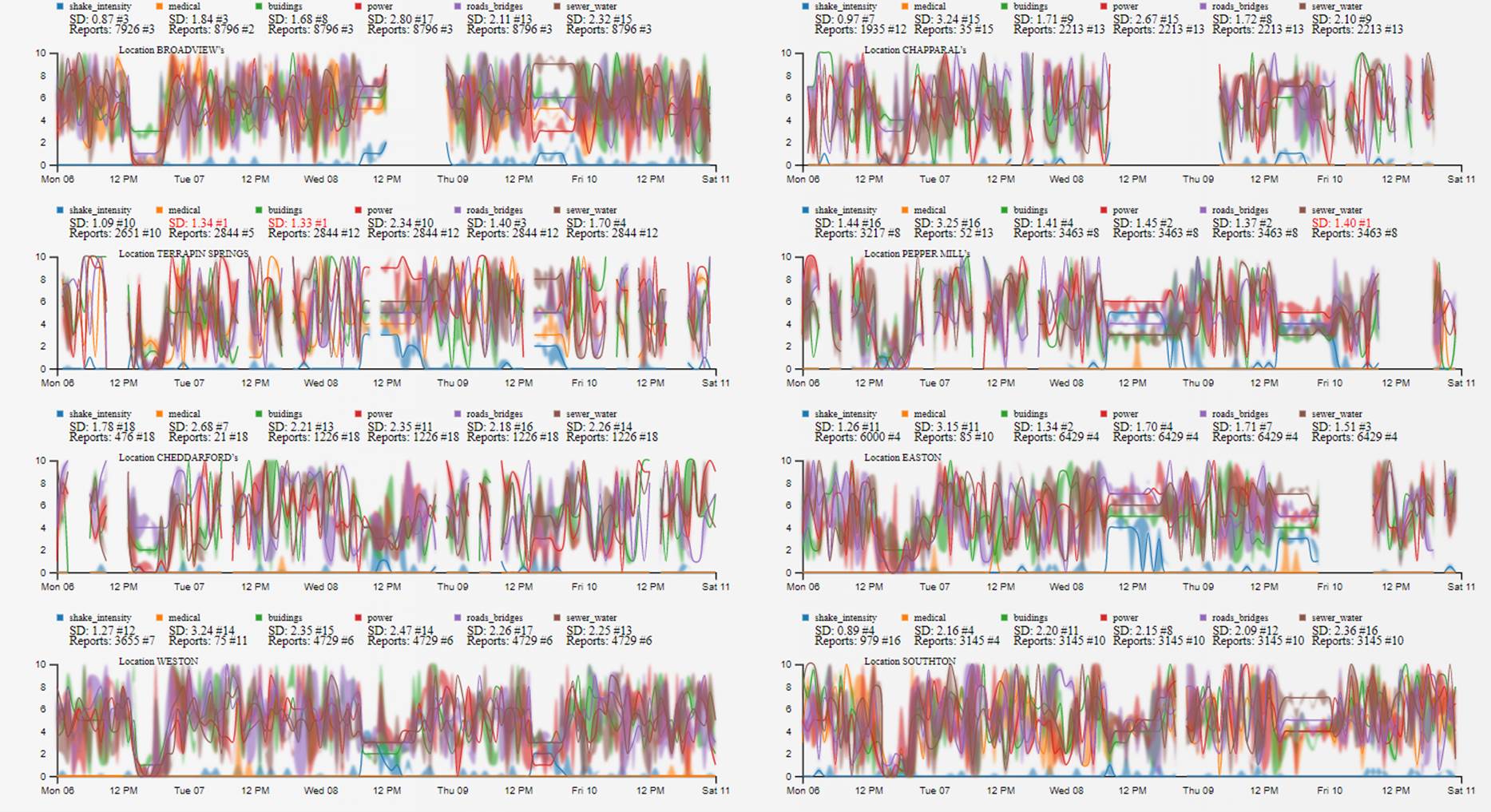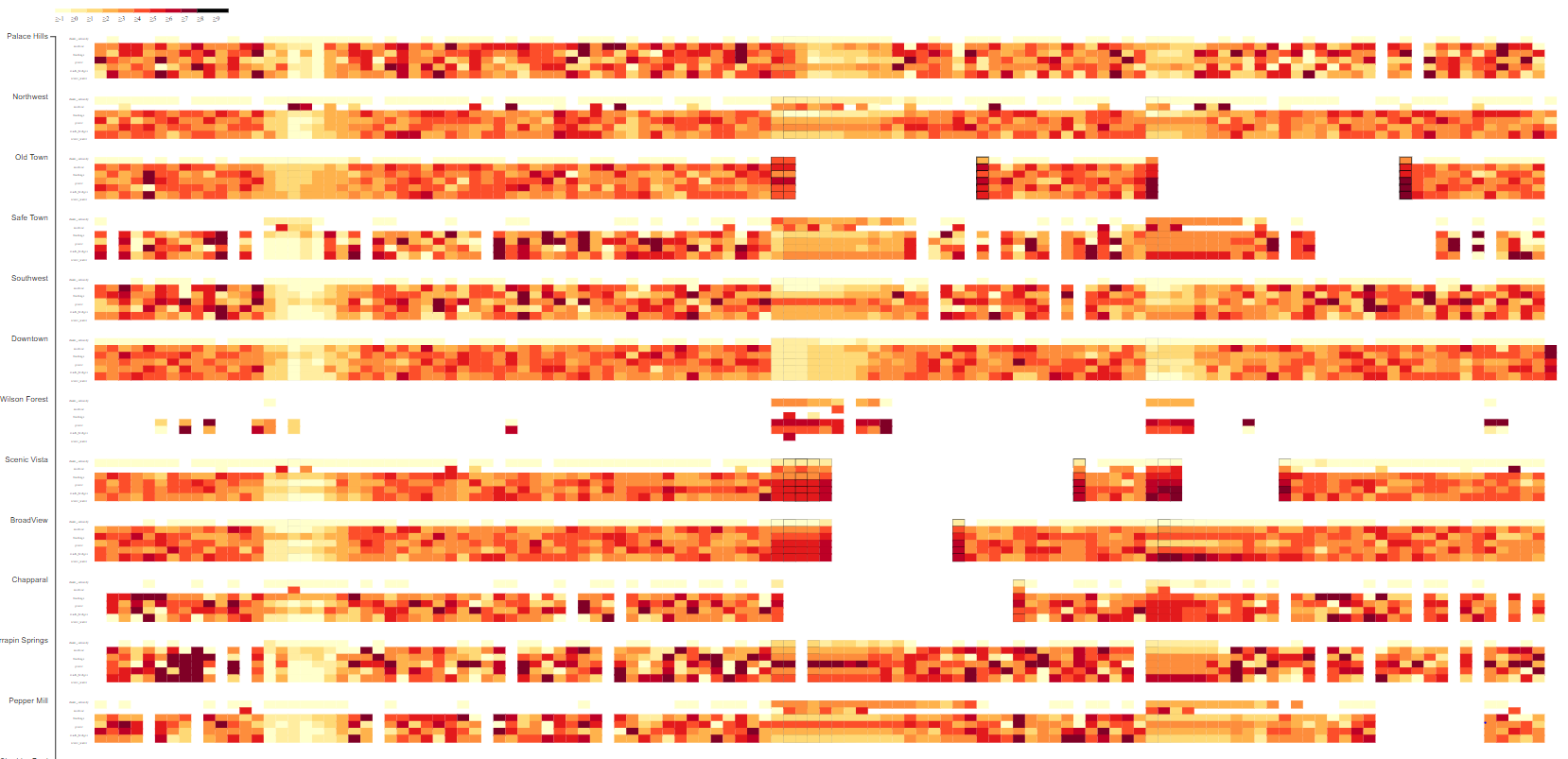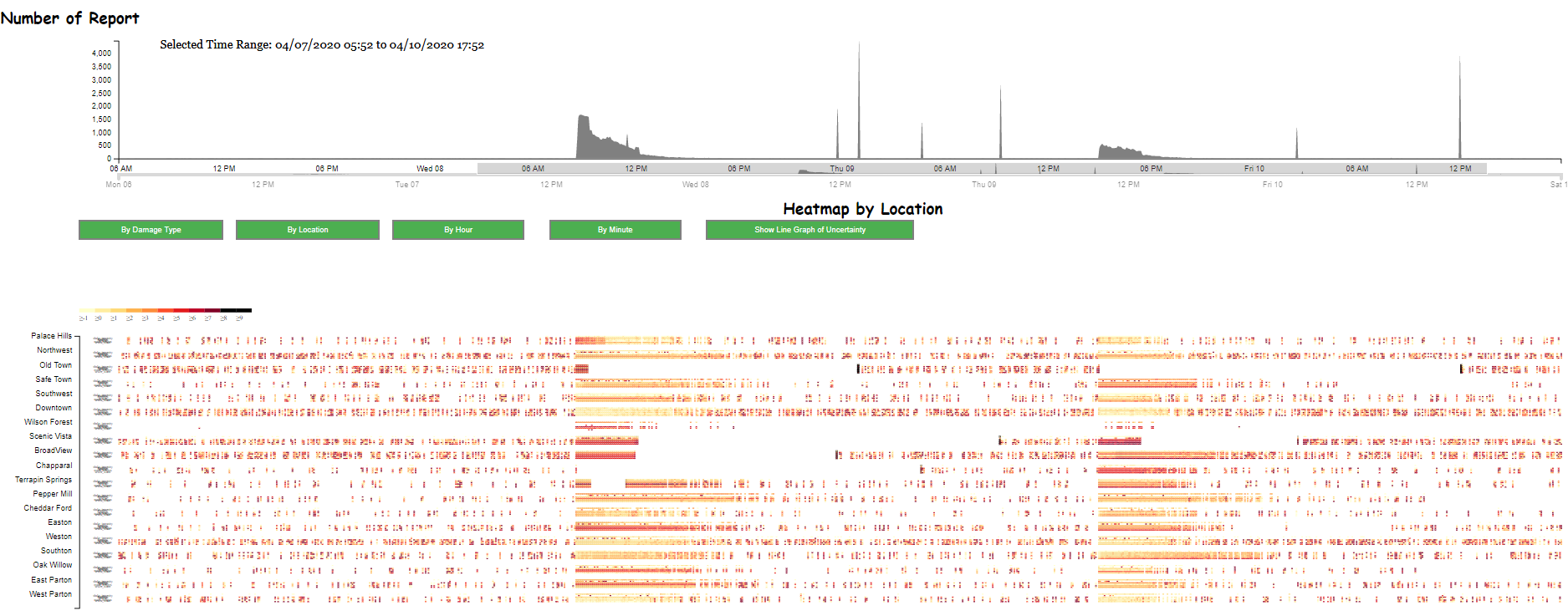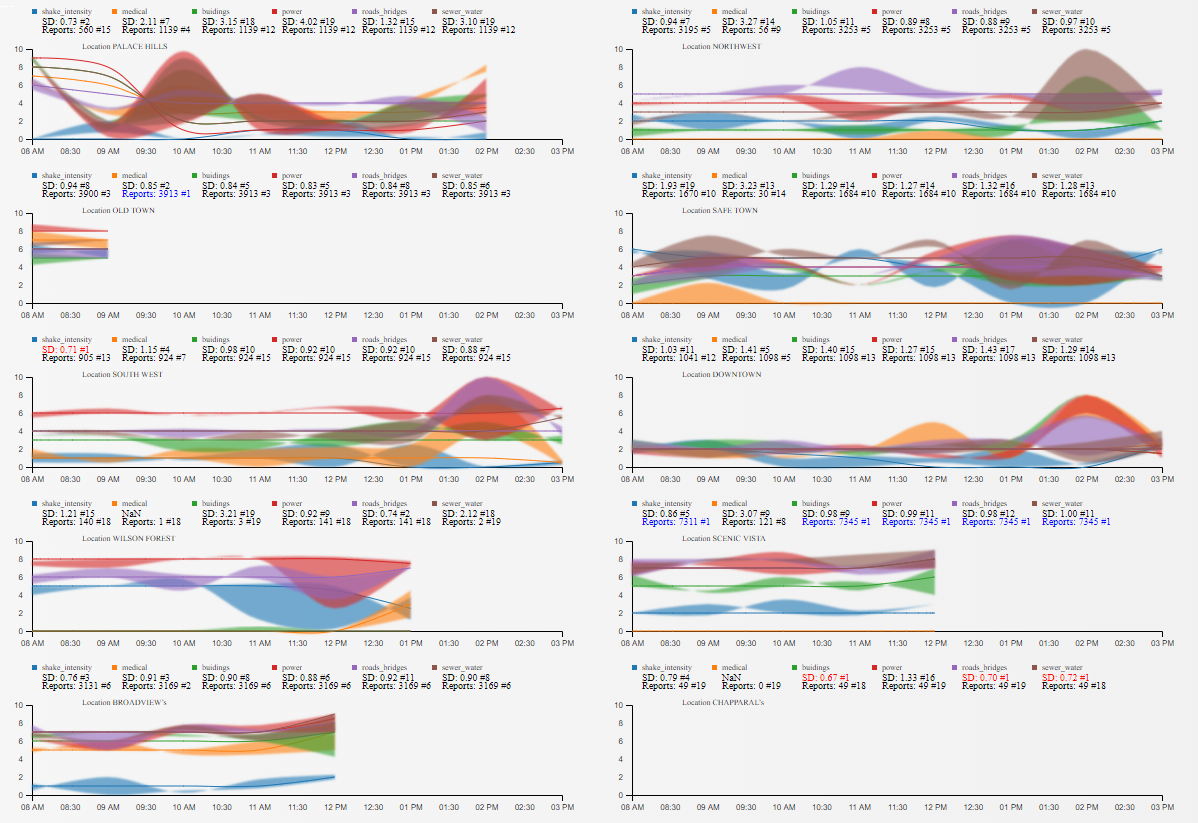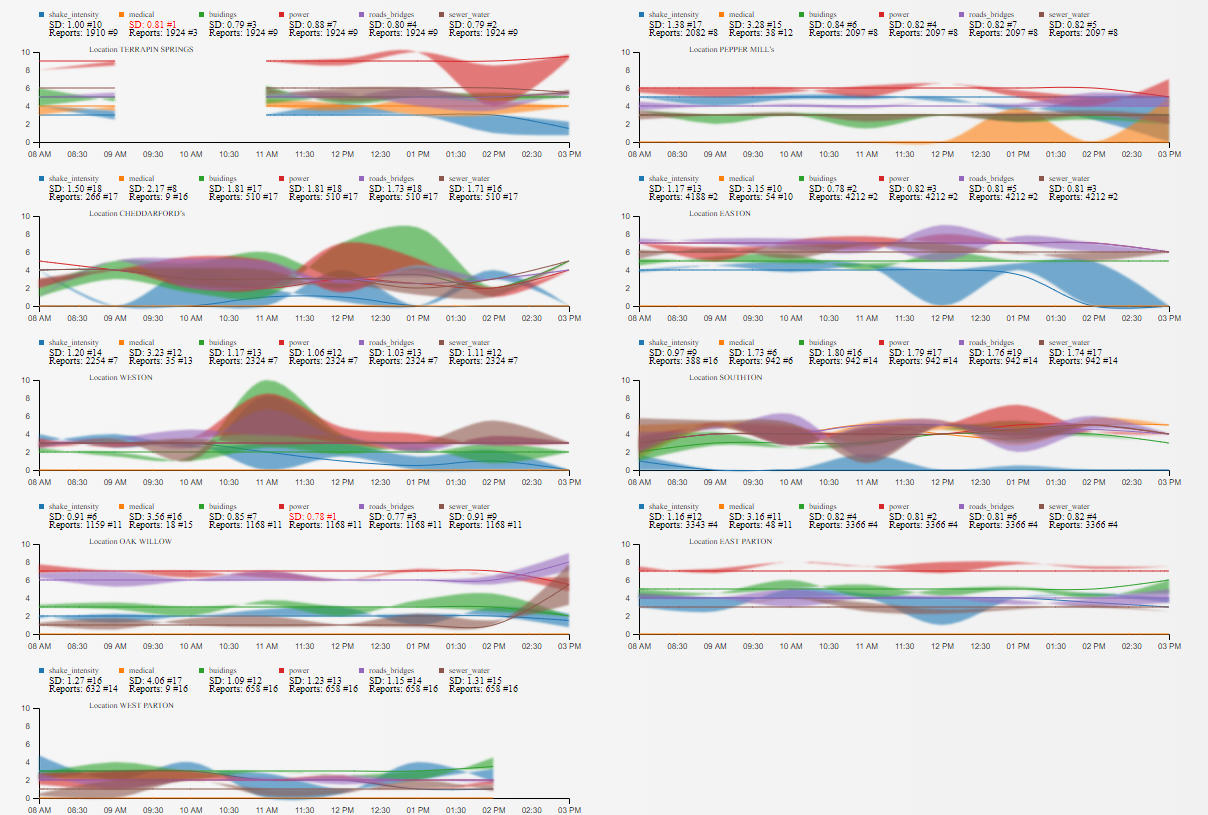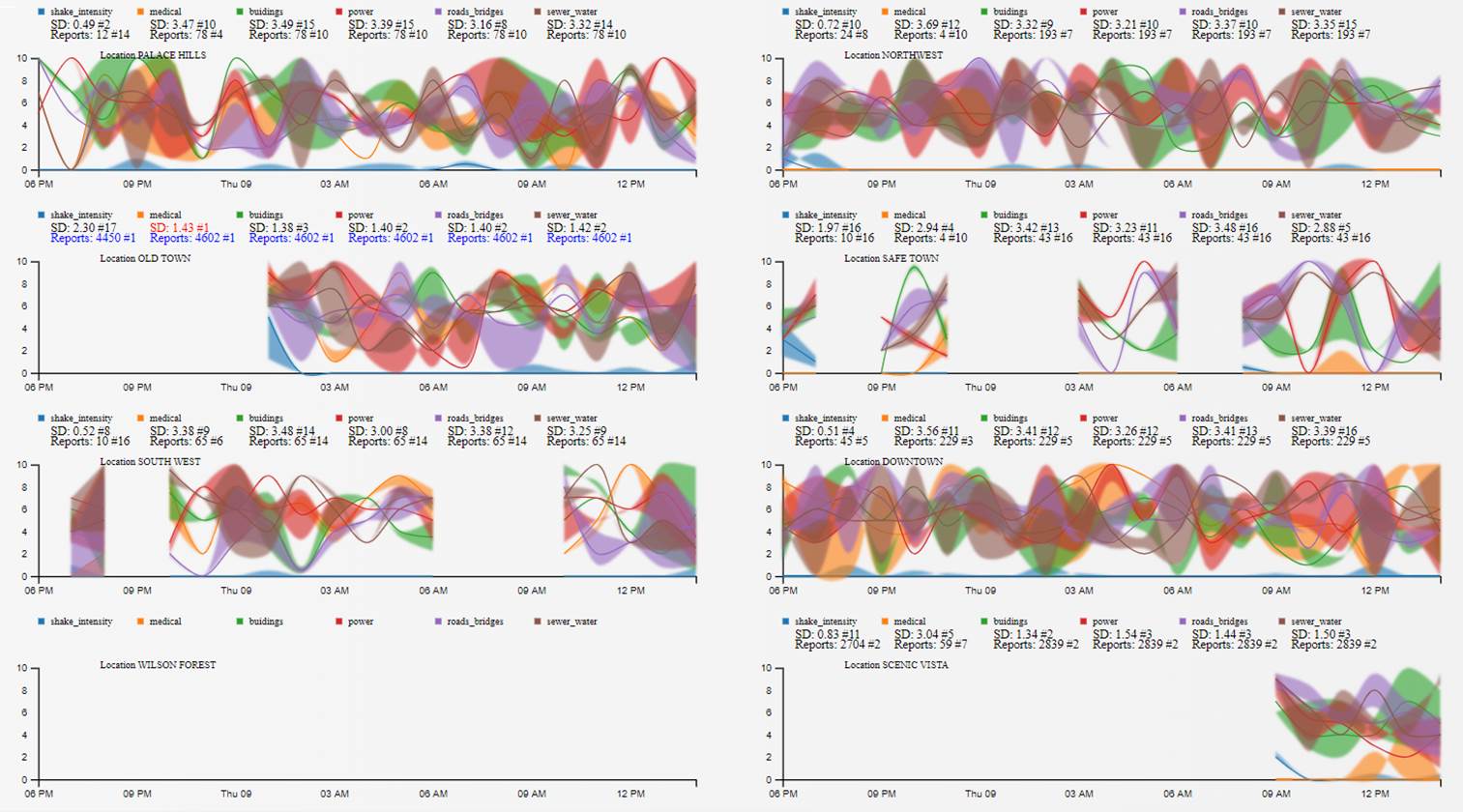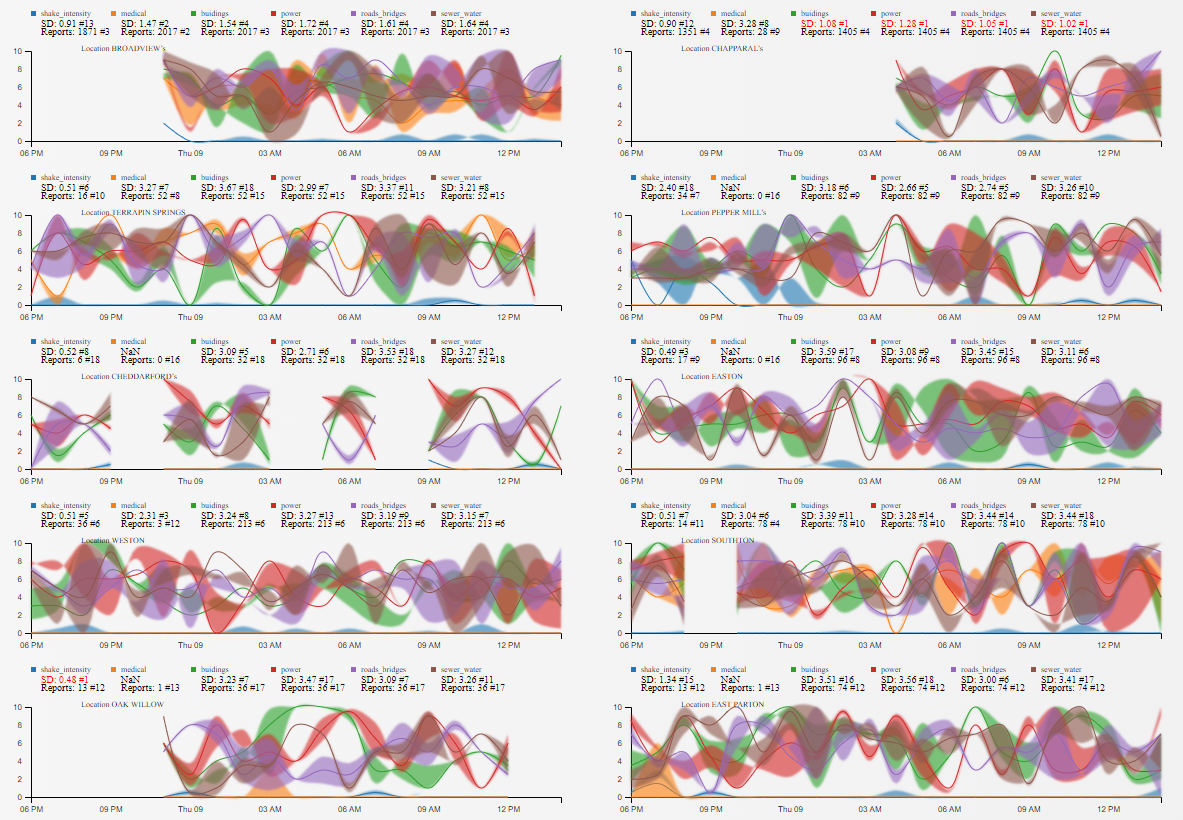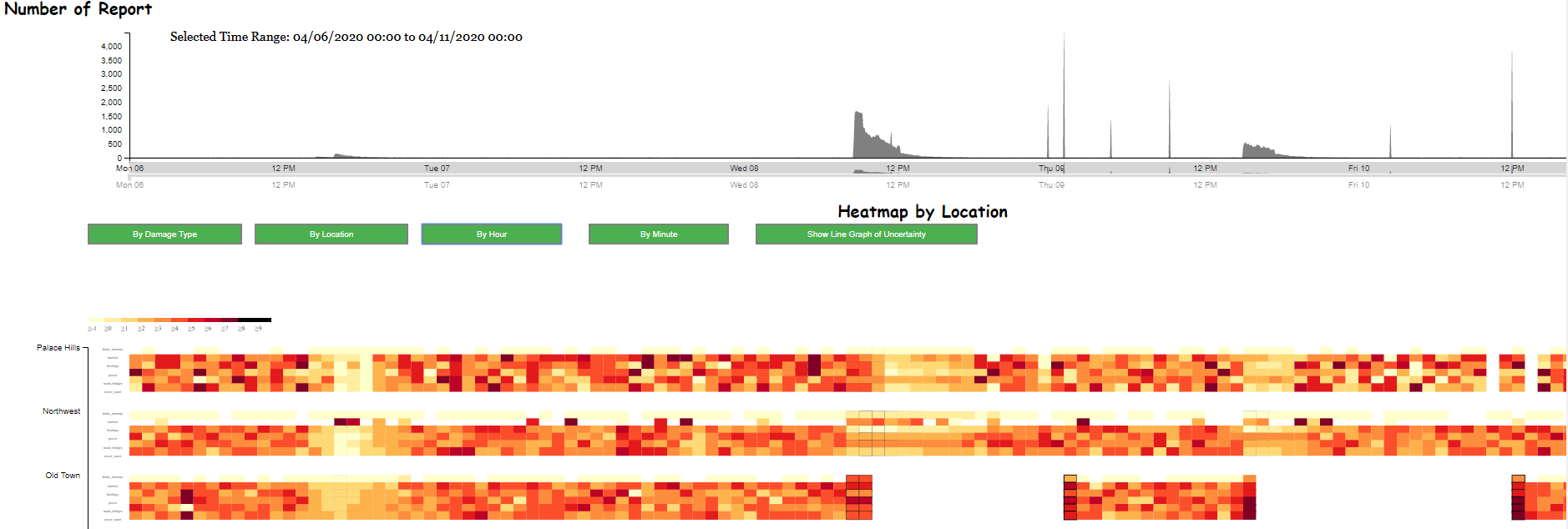3 - How do conditions change over time? How does uncertainty in change over time? Describe the key changes you see. Limit your response to 500 words and 8 images.
According to the Figure 11, it shows that the condition changes over time. There are 8 time ranges when the number of report spiked up.
Studying in the following heatmap:
• Each location is represented by (6xN) heatmap, n is the number of time step, in this case, one time step is one hour. Furthermore, each column contains 6 rectangle, each rectangle represented for one type of damage. One column represented for the average report data in one hour. Total number of report is represented by stroke-width of the rectangle and the average level of damage is represented by the color of rectangle.
• The lighter the color, the lower average level of damage
• The bigger of stroke-width of each rectangle, the higher number of report at that time step
Based on Figure 11,12,13 the list of event can be described as following:
• Apr 06 13:00 to Apr 06 21:00: Most of the location have low average level of damage in 6 types of damage. The total number of report is also low in the time range.
• Apr 08 8:00 to Apr 08 15:00: There is the significant increase in number of report as well as high average level of damage in Northwest, Old Town, Scenic Vista, BroadView, Terrapin Springs, Pepper Mills, Easton, Weston, Southon, Oak Willow, East Parton, West Parton. According to that information, we can assume that the first earthquake happens in this time range.
• Apr 08 23:45: BroadView has high number of report and average level of damage.
• Apr 09 1:00: Old Town has high number of report and average level of damage.
• Apr 09 4:40: Chapparal has high number of report and average level of damage.
• Apr 09 9:15: Scenic Vista has high number of report and average level of damage.
• Apr 09 15:00 to Apr 09 20:40: All of locations except Old Town and Wilson Forest.
• Apr 10 2:30: Scenic Vista has high number of report and average level of damage.
• Apr 10 12:00: Old Town has high number of report and average level of damage.

Figure 11. Total number of report at each time step during the earthquake, the time range is corresponding to time step in the heatmap below









